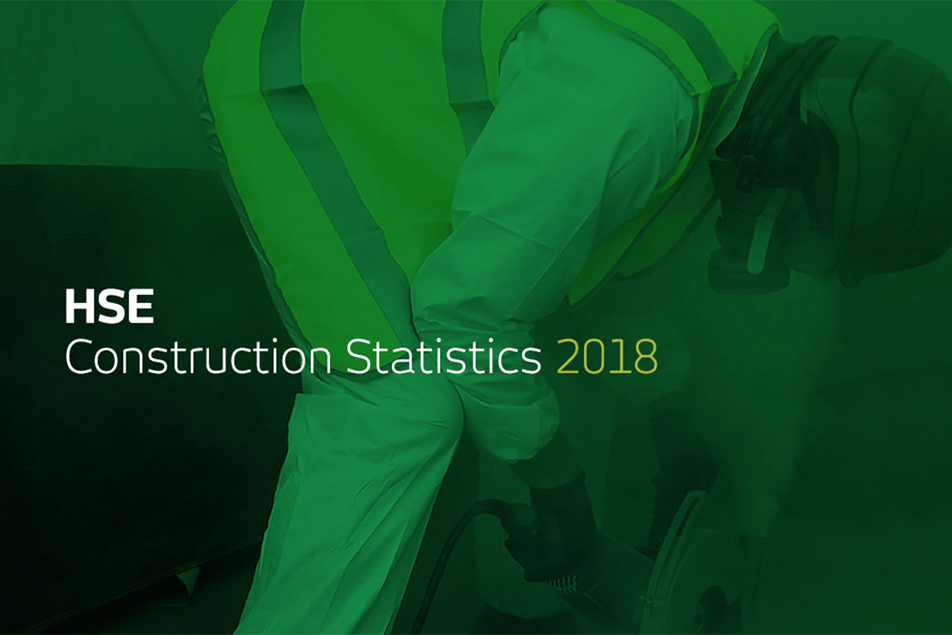The Health and Safety Executive (HSE) recently released their latest Health and Safety at Work report for 2018, and it makes for some interesting reading.
9th December 2018
The Health and Safety Executive (HSE) recently released their latest Health and Safety at Work report for 2018, and it makes for some interesting reading.
Both the safety and health of employees, contractors and the general public entering workplaces (including construction sites), are of equal importance. Yet of the two, safety has generally taken the limelight.
Being a more visible hazard, it's easy to see why.
If we focus our attention on construction sites, with the risk of trips, slips, falls, lifting heavy items, and of course the abundance of construction machinery in use, it's clear that injuries can happen. So precautionary measures must be implemented to minimise the risk to workers and the public.
Nevertheless, less visible but equally high-risk, health hazards are alarmingly prevalent today as these latest statistics show:
There are 82,000 workers currently suffering from work-related ill health in Great Britain (new or long-standing).
13,000 annual deaths are estimated to be linked to past exposure at work, primarily to chemicals or dust.
Occupational exposure to carcinogens is estimated to account for 5% of cancer deaths and 4% of cancer registrations each year in Great Britain. This equates to around 8,000 cancer deaths and 13,500 new cancer registrations annually.
Each year, around 3,000 construction workers suffer from breathing and lung problems believed to have been caused, or made worse, by their work.
Statistically, the rate of occupational ill health is significantly higher for carpenters, joiners and those in the construction and building trades.
Airborne materials from spray painting, welding, or cutting and grinding metals, are among the factors contributing to the ill-health of those suffering from asthma.
While smoking is the main cause of Chronic Obstructive Pulmonary Disease (COPD), other factors include occupational exposure to fumes, chemicals and dusts and environmental pollution.
Painters and decorators, carpenters and joiners, and construction and building trades, all suffer from more than twice the all-industry rate of contact dermatitis.
Occupational deafness is higher for workers in the construction industry than most other sectors.
Reducing these figures is possible, but it requires action across the sector at every level.
Moving health up the agenda when it comes to 'health and safety' is the top priority.
Increasing the awareness of health hazards among both senior teams and the workers themselves to empower everyone to make best-practice decisions.
Understanding the specialist equipment available, no matter the task being performed, and being fully trained in its proper use.
There were 26.8 million working days lost due to work-related ill health in 2017/18.
Being aware of health hazards and implementing effective systems to minimise their harm, will reduce sick days, improve team performance, and as a result, boost business efficiency.
Know the risks, implement solutions, and let's work in a world where the impact of site work on life and health is effectively zero.
Every life counts.
* HSE Statistics can be found here http://www.hse.gov.uk/statistics/
Do you have a challenge on site? Enter your details below to get expert advice from a hazard control specialist.
We process your information in accordance with our Privacy Policy and Terms of Service.
A member of our expert team will contact you shortly to discuss your product requirements and solutions.